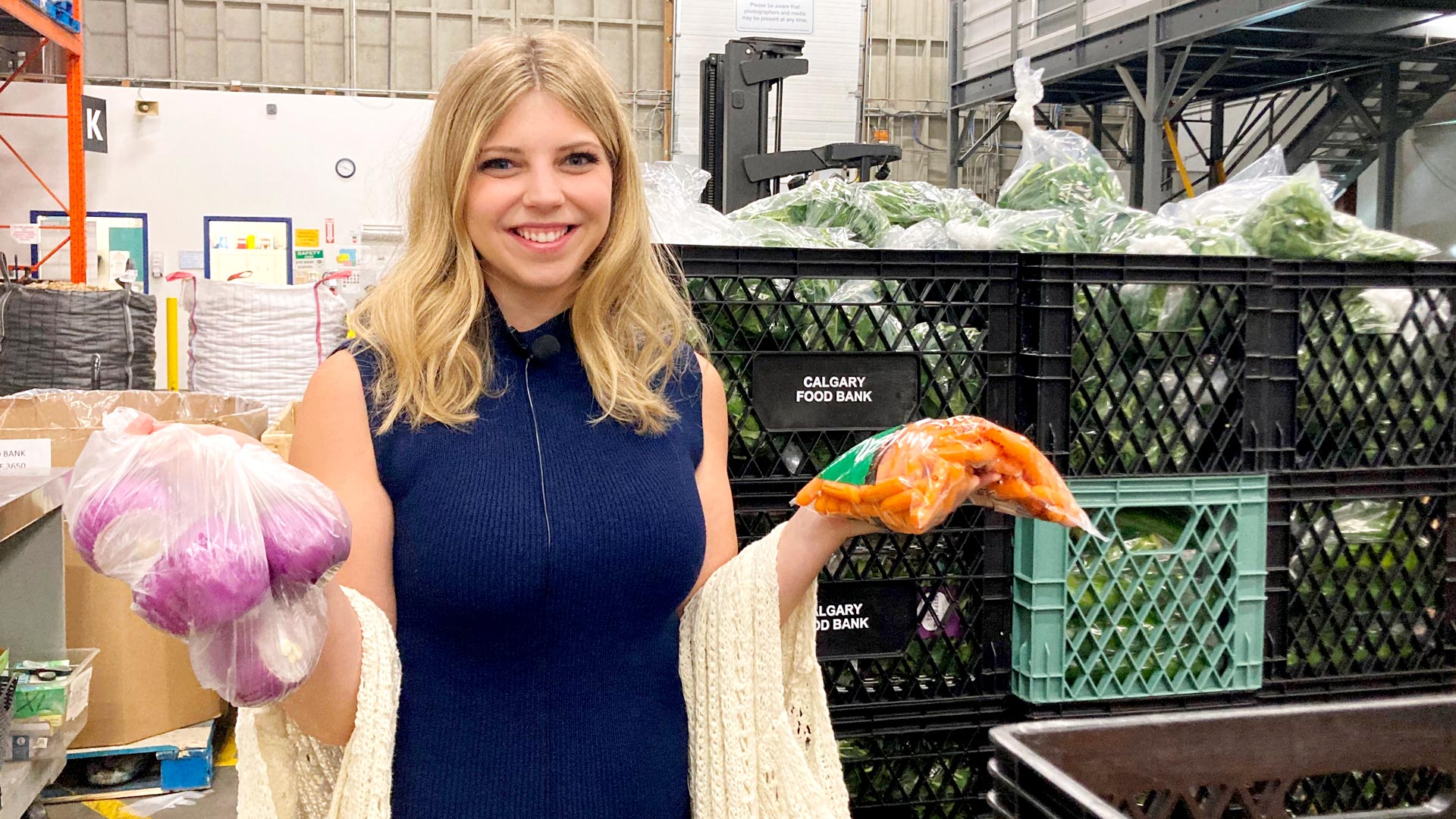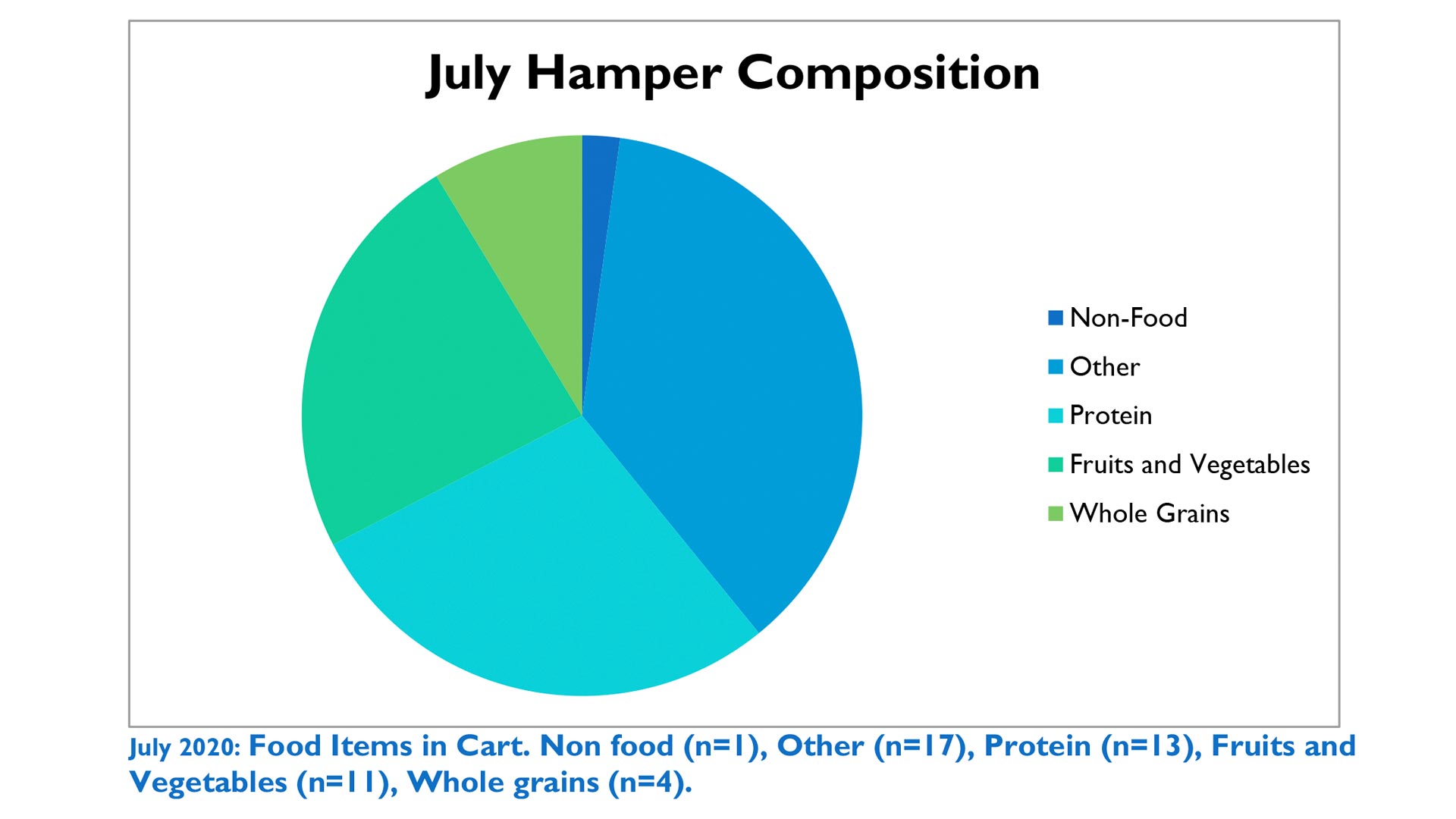A bite of information | Blog
Meet Mikala Wilson!

Read story of creative collaboration:
Mikala Wilson is a Primary Care Dietitian with Mosaic Primary Care Network (PCN) and a former volunteer with the Calgary Food Bank. In the spring of 2020, she volunteered in the food distribution area; a few months later, she was asked to help with Food Hamper Nutrition Analysis. THAT was a changing moment for her and for us. Mikala remembers telling everyone who would listen: THIS IS PERFECT FOR ME!
And perfect for us because this U of A graduate with a Bachelor of Science in Nutrition has a passion for understanding the nutrition needs of our community’s most vulnerable. That passion dovetails perfectly with ours. The Calgary Food Bank’s mission: together, we fight hunger and its root causes because no one should go hungry. Our vision is a hunger-free community.
And just like that, together with our team Mikala not only flourished in the new position, but it also inspired her to pen a proposal to the Executive Leadership Team at Mosaic PCN. Her proposal included 14 pages of research from food banks worldwide that provided significant insight into the benefits of having a health care worker, such as a dietitian on staff, to provide health support for clients. One of the key determinations Mikala discovered was that many people with chronic diseases such as diabetes, hypertension, obesity, kidney disease and high cholesterol regularly access food banks.
I want to ensure all our hampers contain as much nutritious food as possible, so the vulnerable in our city receive the greatest health benefits, and my dream is to create diabetic/heart health hampers.
The proposal was accepted, and thanks to the generosity of her employer Mosaic PCN, they have seconded her to us one day a week to support our teams. By mid-summer, Mikala had already analyzed our renal, celiac, and general emergency food hampers. She created an outline for recommendations that line up with the Canada Food Guide, and along with support from her colleagues at Mosaic PCN, she has been able to advise how we can better serve our population with more nutritious offerings. Some of the work she has done has been to create a comprehensive content guide for celiac hampers to protect clients that may have celiac disease. For our renal hampers, Mikala made guidelines and recommendations to limit salt intake.
While our current Emergency Food Hampers provide various healthy options, her expert analysis found that we could add more fibre-rich foods. The sample pie graph below indicates the portions that contain protein, fruits and vegetables, whole grains, “other,” and non-food items. The piece of the “pie” that is labelled “other” contains foods that are not in the Canada Food Guide, often white bread, rice, and pasta. Mikala says there is an easy way to change this scenario – move to more whole grain content.

In 2019, Health Canada updated Canada’s Food Guide. The new guide has moved away from serving sizes. It focuses on a balanced style of eating with whole grains, proteins, and vegetables and fruits.
Mikala suggests that asking for donations or sourcing products to purchase that are high in fibre, such as oats, whole grain bread, fruits, vegetables, lentils, chickpeas, black or kidney beans, will not only move the needle on the chart but create an even more wholesome hamper for our clients. In addition to this, Mikala recommends minor changes such as looking for canned fruit packed in juice or water instead of syrup and checking labels to ensure there is no added salt. These are easy for everyone to do. By increasing food banks users’ intake of fruits, vegetables, and whole grains, we can improve their fibre intake, which can prevent cardiovascular disease, diabetes and even some forms of cancer. By providing dietitian support to food banks, we may be able to improve the health outcomes of this population.
We are so excited that Mikala will continue to join us one day a week for the foreseeable future to assist in the analysis of our hampers. Mikala says, “I want to ensure all our hampers contain as much nutritious food as possible, so the vulnerable in our city receive the greatest health benefits, and my dream is to create diabetic/heart health hampers.” While it will take time for all of this to become a reality, her vision of a healthier community continues to inspire us as we work collectively with others to continue to provide food support to those who need it.
